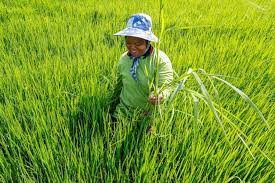PH seen to import more rice as harvest may fall short this year.
The Philippines is seen to import more rice than earlier expected this year—remaining as the biggest rice buyer in the global market—amid a likely larger shortfall in local harvest.
This is according to the Foreign Agricultural Service of US Department of Agriculture (USDA), which estimated that the country would import 4.1 million metric tons (MT) of rice this year, up by 200,000 MT or 5.1 percent from the previous estimate of 3.9 million MT in February due to ‘smaller crop’ from local farms.
If reached, this would be nearly 14 percent more than the 3.6 million MT of rice that entered the archipelago in 2023.
The latest forecast is aligned with the report of the USDA unit that global rice imports would rise to 53.3 million MT from 52.38 million MT mainly due to higher demand from Indonesia and the Philippines.
It also estimated that the country would remain as the leading rice importer worldwide, followed by Indonesia, China and the European Union.
In the first two months of 2024, the country imported 728,254.49 MT of rice, based on a tally from the Bureau of Plant Industry. Like in the past years, Vietnam accounted for the majority of the supply, amounting to 390,997.22 MT.
This was as the USDA lowered its projection on domestic rice production this year to 12.3 million MT from the previous estimate of 12.5 million MT. This is contrary to its outlook that global rice output will increase to 515.4 million MT, due to larger crop expected from India.
Local production
The Philippines produced a total of 20.06 million MT of rice in 2023, up by 1.5 percent, based on data from the Philippine Statistics Authority (PSA). Last year’s output surpassed the previous record output of 19.96 million MT in 2021.
Central Luzon was the leading producer of palay with 3.64 million MT or a share of 18.1 percent, followed by Cagayan Valley and Western Visayas with 3.03 million MT and 2.26 million MT, respectively.
Philippine rice self-sufficiency level declined to 77 percent in 2022 from 81.5 percent in 2021, based on PSA figures.
The DA, through the Masagana program, is aiming for a 97-percent rice self-sufficiency by 2028.
Meanwhile, the United Broiler Raisers Association (Ubra) anticipates poultry production to reach at least 1.8 million kilograms to as much as 1.9 million kg this year, up 2 percent from a year prior.
Ubra chair Elias Jose Inciong said this outlook is ‘conservative,’ noting that normal growth is 4 to 7 percent a year.
Poultry demand is expected to range between a low of 1.5 million kg and a high of 1.6 million kg, especially in the second quarter, due to the fiesta season.
This article has been republished from businessenquirer.

